HD-F731-1 Chair Swivel Test Rig
EQUIPMENT DETAILS
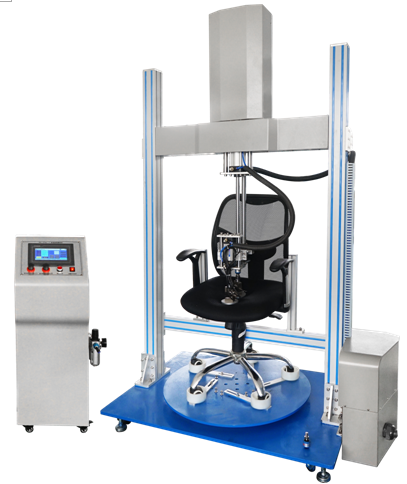
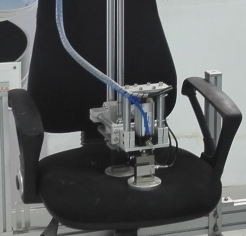 Two loading pad on Chair
Two loading pad on Chair
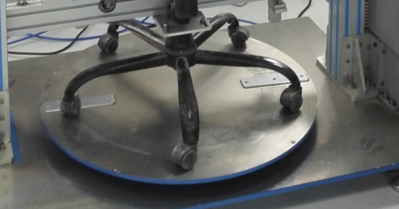 Electromotive test axis for the rotation of the turning
Electromotive test axis for the rotation of the turning 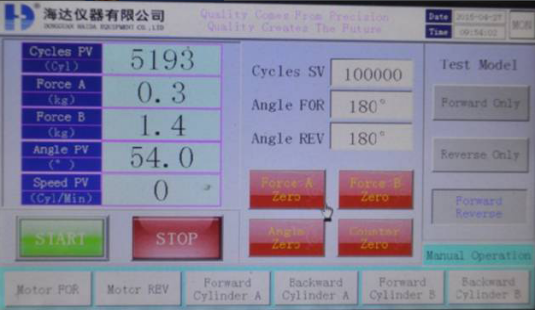 Operation interface
Operation interface
Equipment Description
Test rig for rotation testing on seating furniture according to EN 1335, EN14073-2, DIN 38878 and BIFMA X5.1, load controlled with loading pad. The pneumatic test axis operates from PLC.
GENERL SPECIFICATIONS
Machine Dimensions: (W x D x H) 1680*890*1840mm
Power supply source: single-phase, AC220V±10%, 50/60Hz (can be appointed)
Gross Weight: 400kg
STANDARD FEATURES
Framework | 1 framework with traverse member and base plat 1200mm ×1200 mm , 12mm thick, galvanized steel |
Rotation test axis | 1 electromotive test axis for the rotation of the turning knob, position-controlled, rotation angle +/- 360° |
Pneumatic test axis | 1 pneumatic test axis for seat, load controlled, position diameter 80mm, stroke 500mm |
Load | Load up to 1900N, 2 × Load Cell 2KN. Load is transmitted vertically to the seat with lateral adjusting range |
Limit Control | Operating pressure and cylinder limit switch control |
Emergency Button | 1 emergency button |
Number and Cycles | Can be set by PLC ( 0- 99,999) |
Accessories (Optional) | 1 load pad diameter 200mm DIN EN 1335 |
APPLICATION STANDARDS:
EN 1335, EN14073-2, DIN 38878 and BIFMA X5.1
Reference Doc: EN 1335 Swivel Test
EN1335 Chair Loading Points
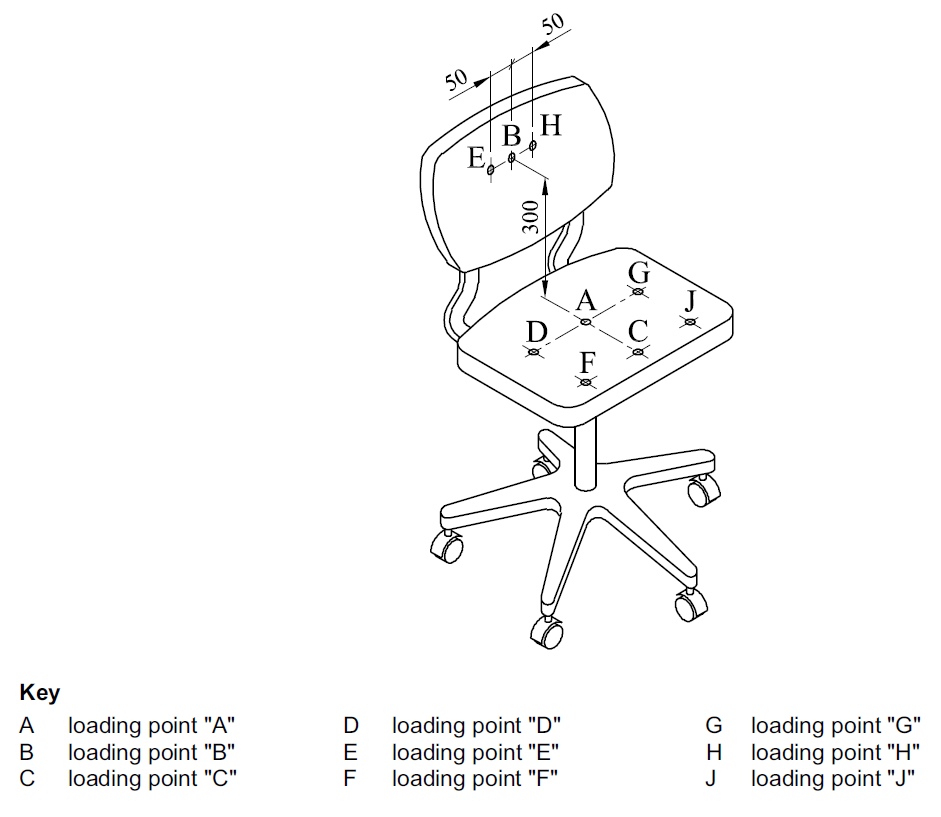
EN 1335 Chair Swivel Test Procedure:
The base of the chair shall be secured on a rotating table with a test surface so that the rotating axis of the chair coincides with the rotating axis of the table. The upper part of the chair shall be loosely fixed in such a way as not to hinder the rotation of the base. Load the seat in loading point A with a mass 60 KG and in loading point with a mass 35KG or any equivalent loading which will result in the same downwards force and bending moment on the chair. The angle of rotation shall be 360° at a rate of (10 ± 5) cycles/minute, 120,000 cycles. Change direction after each rotation.
EN 1335 Positioning of Chair components
Clause | Test | Seat Height | Seat | Back rest in height | Back rest in depth | Tilt stiffness adjustment | Castors and base | Arm rest | Foot rest | |
7.3.3 | Swivel test | Highest position | Horizontal foremost position | Highest position | Rearmost position | - | - | - | - | |
EN 1335 Smaller seat loading pad (Optional Accessories)
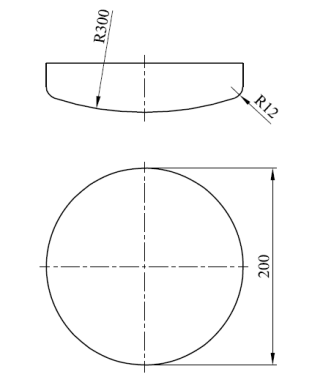
Reference Doc: BIFMA X5.1 Swivel Test
Chair Test Step
a) The chair shall be restrained on a platform. Either the seat or the platform shall be restrained from rotation.
b) If the seat adjustable, set it to the maximum seat position. Set all other adjustable features to the normal use condition.
c) A 113 Kg (250 lb) load shall be placed on the seat such that the centre of gravity of the load is 51 to 64 mm (2 to 2.5 in) forward of the centerline of the rotational axis as shown in Picture 1.
d) The cycling device shall be adjusted to rotate the lesser of the following: the available range of rotation or 360 degrees ± 10 degrees. If the available range of rotation is less than 360 degrees, the rotation of the test machine shall be adjusted such that the swivel mechanism touches but does not override the stops. The rotation may be either bidirectional or unidirectional.
e) For chairs that swivel 360 degrees, a cycle is one full rotation. For chairs that swivel less than 360 degrees, one cycle is rotating from one stop to the other stop.
f) The seat or platform shall rotate for 60,000 cycles at a rate between 5 and 15 rotations per minute.
g) If the seat height is adjustable set the height to its lowest position.
h) For all chairs, continue the test for an additional 60,000 cycles to a total of 120,000 cycles.
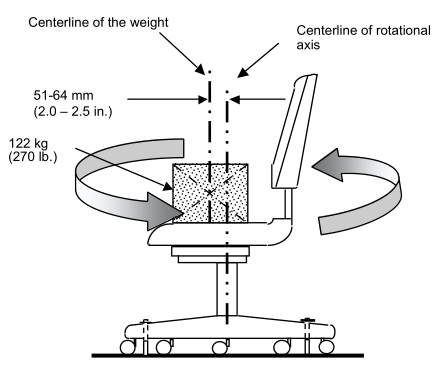 Picture 1
Picture 1